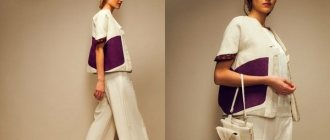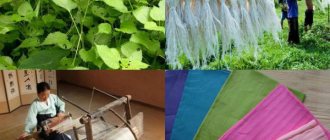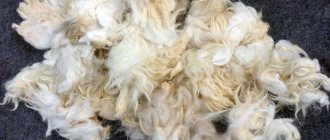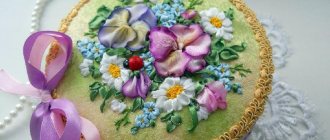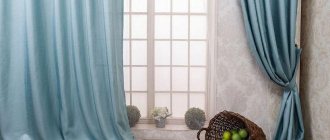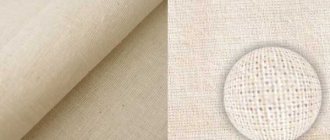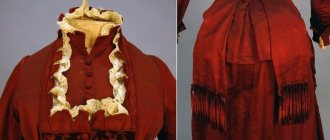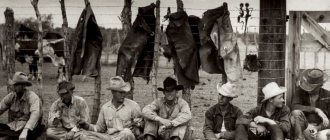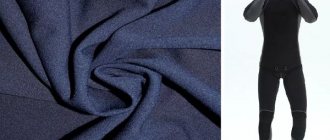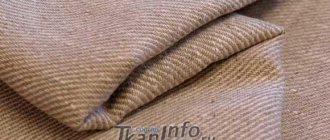Historical facts
According to some archaeologists, hemp began to be used more than 4 thousand years ago. Even in ancient times, this plant was a raw material for the manufacture of clothing, bed linen, sailing sheets, curtains and many other textile products. It was also widely used for the manufacture of ropes, ropes and cables. In Russia, hemp began to be cultivated under Peter I, and the fibers extracted from the plant were called hemp or hemp. It was also used as caulking for wooden houses.
There are two types of the plant: Cannabis Sativa, which is legal for cultivation and used for industrial production, and Cannabis Indica, which contains higher amounts of tetrahydrocannabinol (a psychoactive drug), its fibers are of lower quality and are used in the production of drugs and some types of medicines.
At the beginning of the twentieth century, the famous company LEVI'S produced its first jeans made from hemp fabric and tried to establish their mass production. But the process was very labor-intensive, and then the war on drugs began to interfere with this. Nowadays, when they began to cultivate hemp that does not contain narcotic substances, and the technological process became easier, this type of fabric began to rapidly gain popularity.
Cannabis is a dioecious plant, meaning there are male and female plants. Bushes with male flowers are called “poskonyu”, and those with female flowers are called “materka”. Male ones ripen faster, so they used to be collected by hand, even before they hardened, and the mother was left to ripen to obtain seeds. Thin fabrics for clothing were made from the raw material, and ropes and ropes were made from the mother cloth.
Is there any benefit to the body from tissue?
Hemp has long been known as a miracle crop for its versatility, and one of the best uses for hemp would be in clothing. Hemp is perhaps the most sustainable fabric you can find for clothing. It doesn't need pesticides to grow, uses very little water, and helps replenish the soil so that new crops can grow soon after harvest. Cannabis also grows very quickly and can grow in almost any climate.
Hemp fabric has the following advantages:
The fiber is actually more porous and breathable
- Mold resistant.
- Cannabis fiber is approximately 8 times stronger than cotton.
- Fiber can and should replace harmful synthetic plastic fibers wherever they are used.
Canvas
Interesting fact! On July 4, 1776, the Declaration of Independence was written on cannabis paper.
Interestingly, materials made from hemp have been discovered in tombs dating back to 8,000 BC. e. George Washington sailed on ships equipped with sails and ropes.
It was widely grown in colonial America by numerous farmers, including D. Washington and T. Jefferson.
Also, for example, B. Ross sewed the first American flag from hemp.
Flag
For thousands of years, cannabis has been traditionally used as an industrial fiber. Sailors relied on hemp rope to hold up their ships and sails, and the coarseness of the fiber made hemp useful for canvas, canvas, bags, rope and paper.
While cannabis fiber was the industry's first choice, the coarseness of the fiber limited cannabis from clothing and home use.
It needed to be softened. Traditional methods for softening plant fibers used acids to remove lignin, a type of natural glue found in many plant fibers.
While this lignin removal method worked well with cotton or flax, it weakened the hemp fibers and left them too unstable to use. Therefore, it remained an industrial fabric.
Interesting fact! In the mid-1980s, researchers developed an enzymatic process to successfully remove lignin from hemp fiber without compromising its strength.
For the first time in history, degummed cannabis fiber could be spun alone or with other fibers to produce clothing textiles. This technological breakthrough has catapulted textiles to the forefront of modern design and weaving techniques. Given the superiority of hemp over other fibers, the benefits of this breakthrough are enormous.
You may be interested in What is composite leather, its use for shoes and bags
Production Features
Read about: velvet: incomprehensible, great and perfect.
The fabric is produced from the stems of the plant, which consist of pulp and fibers. The bushes are planted in the fields very close to each other, when the leaves fall, the remaining stems are mowed down and left to lie on the ground in rain and sun, sometimes turning over so that the sun hits each side. The fibers become soft, and all minerals return to the ground along with rainwater. This process is called biological lobe or spread. The stems are then collected by a special machine that separates the fiber from the pulp. Previously, this was done manually. The resulting fiber is bleached and dried.
On a note
The production of hemp fibers does not use a large number of chemicals, unlike the production of synthetics and cotton.
Hemp fabric and its properties
Hemp products are practical and easy to use, as they have many positive qualities:
- strength and wear resistance. Hemp fibers are the strongest among plant fibers, they are several times stronger than cotton and wool. Clothes made from such fabric can withstand repeated washing and will last for many years;
- hygroscopicity. The fibers are porous, due to which the fabric is able to absorb large amounts of water. This ensures good “breathing” of the skin and optimal thermal balance. Hemp clothes are warm in winter and cool in summer;
- hypoallergenic. When growing a plant, there is no need to use fertilizers or chemicals to control pests, so clothing made from such fibers is environmentally friendly and non-toxic, suitable for people with sensitive skin. In addition, it does not attract dust particles;
- do not accumulate static electricity, unlike synthetics, wool and cotton;
- softness. Hemp is softer and warmer than cotton, its fibers are longer and stronger;
- lightness and color fastness. Dyes better than cotton and other types of fabrics;
- resistance to deformation. The fibers do not shrink at water temperatures up to 300 degrees.
Properties and technical characteristics of the material
Cannabis is called "the fiber of a hundred uses." Its significance for the economic and daily life of our ancestors cannot be underestimated. It was an important part for the textile, paper, rope and petroleum industries. Indeed, cannabis was so important in England in the 16th century that King Henry VIII passed the Act of Parliament, which fined farmers who failed to grow the crop.
Besides textiles, cannabis is also used in paper production. The oldest piece of paper—more than 2,000 years old—was discovered in China and made from hemp. Before 1883, between 75% and 90% of all paper in the world was made with hemp fiber. Cannabis paper can also be recycled more times than wood paper.
You might be interested in what Ramie fabric is: full description
Application of material
Hemp is a bast plant similar to flax, kenaf, jute and ramie. Long, thin primary fibers on the outer part of the stem characterize bast-fiber plants. It was probably used for the first time in Asia.
Interesting fact! Hemp is also one of the bast fibers known to the ancient Asians long before the birth of Christ.
The main fiber of the cannabis plant is attached to the core fiber by pectin, a glue-like soluble gelatinous carbohydrate. Basic hemp fibers can be used for mixtures, reinforcements, and specialty pulps and papers. Wood - like cannabis core fiber can be used for animal bedding, garden mulch, fuel and a range of building materials. It also produces a seed oil that contains 25 to 35% oil by weight, which is high in essential fatty acids and is considered essential for maintaining health.
Cannabis can be called by another word - sativa. Yes, marijuana comes from the same plant genus as hops, which have been used to make beer for thousands of years. But what is called "industrial" is another variety (or subspecies) called Cannabis sativa sativa. Marijuana is made from cannabis sativa indica, which is bred to contain between 5-10% of the intoxicant delta-9 tetrahydrocannabinol, or THC. Industrial hemp, Cannabis sativa sativa, contains less than one-tenth of this amount.
Cannabis sativa can be an important crop for the production of locally sourced, sustainable textiles.
Fabric handkerchiefs
This is an annual plant that grows from seeds. It can be grown in a variety of soils, but grows best in soil that produces high yields of corn. The soil should be well-drained, rich in nitrogen and non-acidic. Hemp requires limited pesticides because it grows so quickly and attracts few pests.
Hemp is a traditional fiber crop that has been important for centuries in meeting our needs for textiles, paper and oils. Easy to grow organically. That is, without the need for artificial pesticides, herbicides or fertilizers, so it can make an important contribution to a sustainable future. Cotton production, on the other hand, requires large amounts of pesticides.
Among the characteristics of the fiber, it is worth noting:
- Strength. Hemp fiber is super strong and durable and is actually much stronger than cotton, which also makes hemp clothing durable.
- Antibacterial. The fabric is antimicrobial, antibacterial, fights against harmful bacteria.
- Environmentally friendly. Agriculture when growing hemp does so in an environmentally friendly way, using very little water.
- Resistant to weather changes. Clothing made from hemp maintains temperature conditions.
You might be interested in: Features and properties of organic cotton
The hemp fashion is still in its infancy, however, there are many hemp clothing brands that are making great strides in developing the hemp clothing industry.
Interesting fact! The original Levi Strauss jeans were made from hemp.
Hemp shirt
Benefits for the body
Textiles made from hemp are protected from the effects of fungi and pathogens. They are not afraid of mold and bacteria, they completely destroy the smell of sweat.
Read about: lightness and airiness in beautiful chiffon fabric.
The fabric refreshes and tones the body, and also has a restorative, calming and analgesic effect. It is recommended for the treatment of erysipelas, diathesis, mastitis, and bruises.
Clothing made from hemp almost completely (95%) blocks the harmful effects of ultraviolet rays, thereby preventing premature aging of the skin.
conclusions
- Hemp fabric is plant-based and is produced from technical varieties that do not contain psychotropic substances.
- Hemp material is obtained from poskoni (male plants), the canvas is tough, sails were sewn from it, and cables were made from it.
- To produce textiles for clothing, female plants and maters are used.
- It is environmentally friendly and ideal for our body.
- Hemp clothing has healing properties.
- Today, manufacturers produce 100% natural fabric, as well as materials containing hemp thread, wool, and cotton.
Application
hemp jeans
The fabric, which retained all the beneficial properties of the plant during production, began to be used again for the manufacture of clothing, accessories, interior items, and is even used to decorate indoor walls.
Hemp clothing and accessories
Hemp fibers are used to produce various items of women's and men's clothing: shirts, T-shirts, dresses, sweaters, socks. Thanks to modern technologies, the fabric can be very rough and textured (like burlap), or, on the contrary, thin and smooth like silk. Due to its positive effect on the body as a whole and its hypoallergenic nature, this fabric is often used in the production of clothing for newborns.
Due to the lack of a "greenhouse effect" in clothes made from hemp fabric, it is pleasant and useful to exercise. Knitted items made from hemp yarn are very light, do not shrink, do not stretch or fall off even when machine washed. The yarn can be made from 100% hemp fibers or with the addition of cotton, linen and cashmere.
Backpacks and bags made of hemp fabric are durable, wear-resistant and look very stylish.
Home textiles
In eco-style interiors, curtains made of hemp fabric are used, and decorative pillows, tablecloths, bedspreads, and canopies are also sewn from it. They repel dust, do not fade, do not deform and last a very long time.
It is very comfortable to sleep on bed linen made from such fabric; it absorbs moisture without sticking to the body. Hemp fabric is capable of emitting electric waves corresponding to the electronic waves of human skin.
Features of use in clothing
This fabric is used in different types of clothing. Next, the main areas of application will be discussed.
Hemp jeans
For the vast majority of intelligent people found anywhere on the planet, jeans are the greatest clothing invention in the history of human civilization. They look good. They feel good. They're suitable for (almost) any social occasion. The good ones last forever. And they are popular enough that you can find them in specifications that will adhere to your body in a sophisticated manner. Cannabis denim material is soft and comfortable. It doesn't have the stiff texture of cotton denim.
Type of jeans style
Cannabis fabric is a glamorous fabric for jeans and a lot of other things, and we don't bother using it because we're all stupid.
Hemp shirt
Cannabis fabric has a number of positive properties, both in terms of performance and sustainability, which will make one wonder why a cotton shirt is needed when there are shirts, t-shirts, shirts, blouses, shirts, pants or jeans made from cannabis that have benefits such as :
- Durability. Hemp fabric was first suitable for sailors, but later it began to be used for sewing clothes, since the material had an incredible property - strength.
- Maintains moisture levels.
- Regulates temperature. Paradoxically, cannabis can keep you warm in winter and cool in summer.
Variety of shirt styles
Product care
- It is better to wash hemp products on a delicate cycle at medium temperatures.
- Since the threads are made of porous fibers, during washing they absorb detergent along with water. If the powder does not dissolve well, its particles can damage the structure of the fibers. Therefore, it is advisable to thoroughly dissolve it or use only liquid detergents.
- Items should be rinsed thoroughly to ensure that no traces of detergent remain in the fibers.
- It is better to dry such things outdoors.
- It is better to iron them slightly damp, from the wrong side. Use the “linen” mode.
Useful
The more often you wash hemp products, the softer they will become. Before using bed linen, it must be washed and dried in the washing machine several times to make it more delicate.
In many characteristics, hemp fabric is several times superior to other natural ones. Products made from it are environmentally friendly, hypoallergenic, look stylish and fashionable. With proper care they will last a very long time.
© 2021 textiletrend.ru
Cloth
Stylish, eco-friendly, nature-friendly - hemp products are becoming a global trend. Today, the plant has been adopted by global brands Nike and Adidas: the foot in sports shoes made from hemp does not sweat, and the product is durable.
From the history
In Rus', hemp fiber was used to make ropes, sea ropes, and fishing nets. They wove cloth for clothing. In England, sails were made from hemp: after all, it is the only fabric in the world that does not deteriorate when exposed to salty sea water. Lewis Strauss made his first jeans from hemp fabric.
Benefits of hemp clothing
Hemp fabric resembles flax in density and structure. The fabric is denser than cotton, but softens with wear and every wash.
Hemp clothing has truly “magical” qualities:
- it is many times stronger than cotton, does not tear or fray;
- It is cool in summer and warm in winter;
- neutralizes the smell of sweat and allows the skin to breathe freely;
- has antibacterial and hypoallergenic qualities;
- is able to block harmful solar radiation better than cotton, as it contains natural UV filters.
Products made from hemp fiber do not attract dust and do not accumulate static electricity.
Hemp yarn
Hemp fibers are used to make yarn similar to wool threads. Children's and women's hats, sweatshirts, cardigans, scarves and shawls are knitted from it. Hemp knitwear does not deform when worn and does not lose shape when washed.
Knitted clothes and bags made from hemp are original and beautiful. The porous structure of hemp fiber absorbs dyes well and retains color when washed and does not fade in the sun.
Care Tips
1. For washing machines, it is recommended to use the delicate cycle at 40℃.
2. It is not advisable to use chemical bleaches and stain removers to remove stains. It is better to use regular soap.
3. Clothes should be dried flat. Better - not in the fresh air. Avoid over-drying in electric dryers: the fabric will become rough.
4. It is recommended to iron products in a slightly damp state.
5. Hemp clothing and accessories should be stored neatly folded or on hangers.
When choosing accessories and clothing made from hemp, we not only care about our health and comfort. We think about the well-being of the planet.
The production of synthetic fibers and the cultivation of cotton will pollute the earth with chemicals and pesticides. And growing hemp is a clean and waste-free production.
Modern hemp clothing is high quality, stylish and beautiful. The products are made by hand in small batches: you will always look attractive and original in it.
